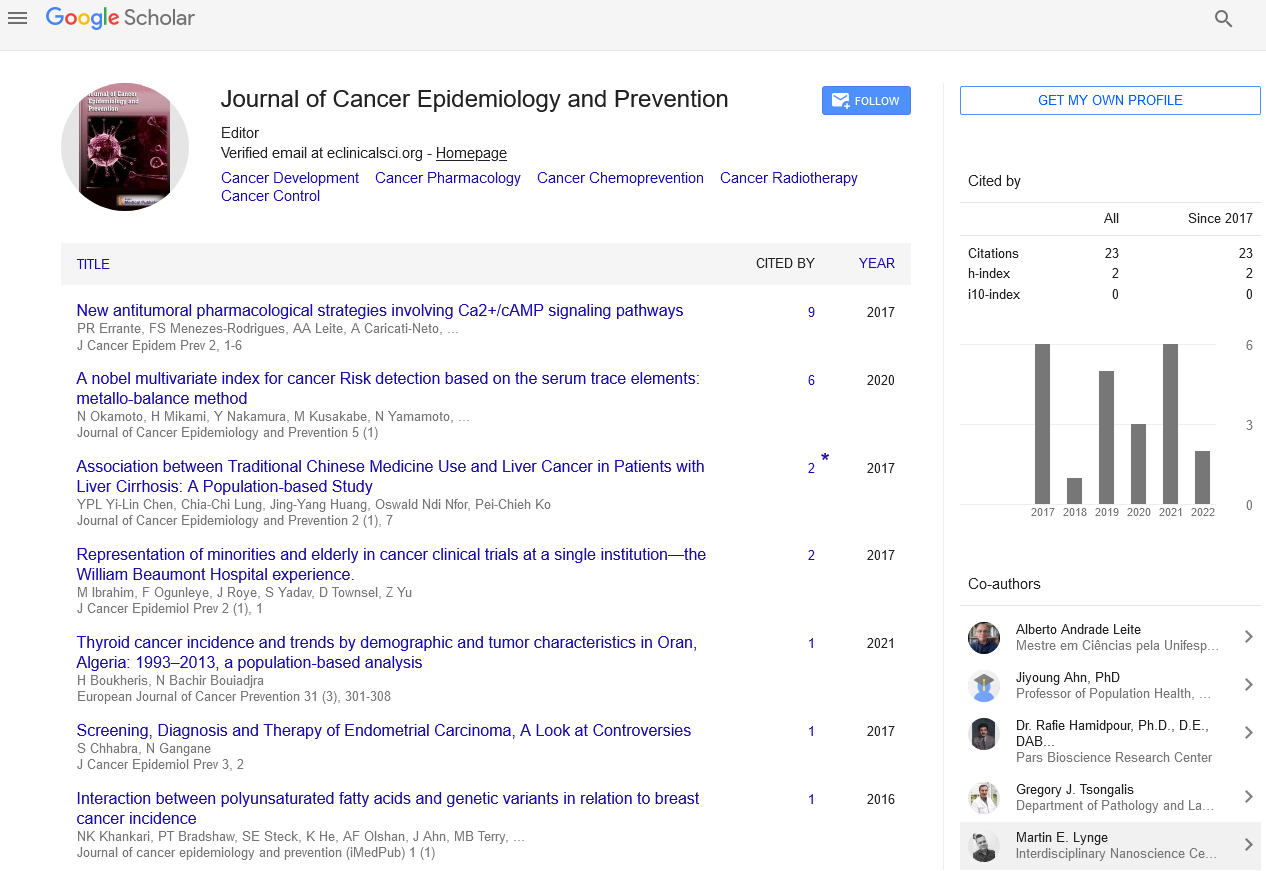Perspective - (2023) Volume 8, Issue 1
Factors Predicting Mortality in Hospitalized African American Patients with Covid-19 Cancer
Lee Jones*
Department of Radio Oncology, University of Jember, Indonesia
*Correspondence:
Lee Jones,
Department of Radio Oncology, University of Jember,
Indonesia,
Email:
Received: 31-Jan-2023, Manuscript No. IPJCEP-23-16270;
Editor assigned: 02-Feb-2023, Pre QC No. IPJCEP-23-16270 (PQ);
Reviewed: 16-Feb-2023, QC No. IPJCEP-23-16270;
Revised: 21-Feb-2023, Manuscript No. IPJCEP-23-16270 (R);
Published:
28-Feb-2023, DOI: 10.36648/IPJCEP.23.08.008
Introduction
In China, for instance, the collapse of the Cooperative Medical
System left many rural poor people without health insurance
and unable to access the resources they required to maintain
their health. Developments in the cost of clinical therapy made
clinical benefits dynamically extravagant for these general populations.
The growing disparity in pay among Chinese people
was another factor that contributed to the spread of this problem.
Poor Chinese often couldn’t finish their treatment plans or
go to the hospital, which made their health worse.
Description
In a similar vein, it was discovered that wealthy families in Tanzania
were significantly more likely to take their children to the
doctor: a critical stage toward better medical services. A few
researchers have discovered that “underinvestment in friendly
goods, such as state-funded education and medical care;” inconsistent
pay distribution itself can be a factor in poor public
health. Deterioration of social capital and disruption of social
cohesion” The role that a person’s financial status plays in their
well-being value goes beyond merely monetary restrictions on
a person’s purchasing power. In point of fact, social capital has
a significant impact on both the health of individuals and communities.
It has been shown that individuals who are better
connected with the resources given by individuals and organizations
around them continue with longer lives. The segregation
of communities on the basis of income has a significant
impact on the quality of health worldwide due to a decrease
in social capital for those confined to poor neighbourhoods.
Therefore, missions to further develop a local area’s wellbeing
can incorporate social intercessions, which expect to further
develop medical care by upgrading a local area’s social assets. In preventing coronary disease mortality, a 1998 epidemiological
review demonstrated that local medical services approaches
performed significantly better than individual approaches.
Some neediness mitigation programs in the creating scene
seem to decrease the probability of ailment through restrictive
money moves. This kind of evidence can direct resources to effective
interventions. In a book altered by Blas and Siva sankara,
Value, Social Determinants, and General Wellbeing Projects,
a section on wellbeing variations among kids is incorporated.
Based on 100 international surveys, this chapter claims that
children under the age of 5 from poor families are more likely
to suffer from health disparities because their health is dependent
on others taking care of them; Young children cannot
maintain their health on their own. These children’s mortality
rates are also higher than those of children from wealthier
families because of malnutrition. For those with low socioeconomic
status, getting health care can be hard. Children from
low-income families are less likely to get health care, and even
if they do, it’s likely to be of poor quality. Disparities among
various minority groups have been linked to a variety of Pap
smear screening methods.
Conclusion
Non-white Hispanics, Native Americans, and African Americans
have been thought to be examined later than white women,
which have been suggested as a possible explanation for their
poorer endurance results. A 2001 study conducted in California
found that Asian women were the ethnic/racial group with
the lowest likelihood of having ever had a Pap test. This study
also looked at Asian American subpopulations. Vietnamese
women had the lowest screening rates (62.3%), while Filipino
women had the highest screening rates (81.1%). Additionally,
American-born women have higher screening rates than foreign-born women in the United States.
Acknowledgement
None.
Conflict of Interest
The authors declare that they have no conflict of interest.
Citation: Jones L (2023) Factors Predicting Mortality in Hospitalized African American Patients with COVID-19 Cancer. J Cancer
Epidemiol Prev. 8:008.
Copyright: © 2023 Jones L. This is an open-access article distributed under the terms of the Creative Commons Attribution License,
which permits unrestricted use, distribution, and reproduction in any medium, provided the original author and source
are credited.

